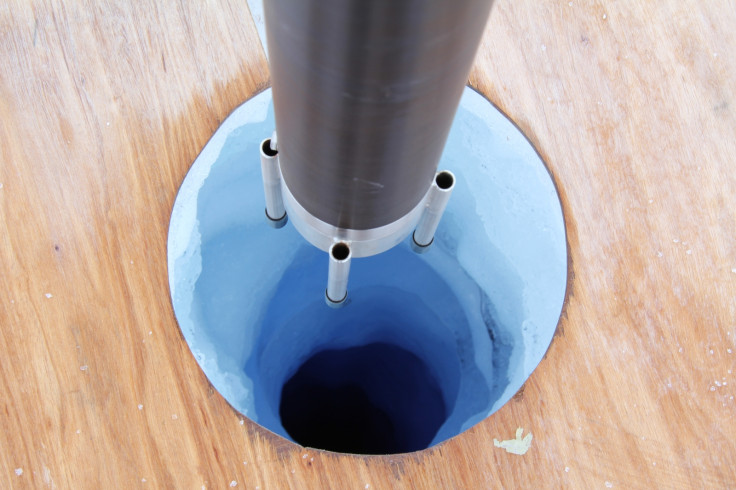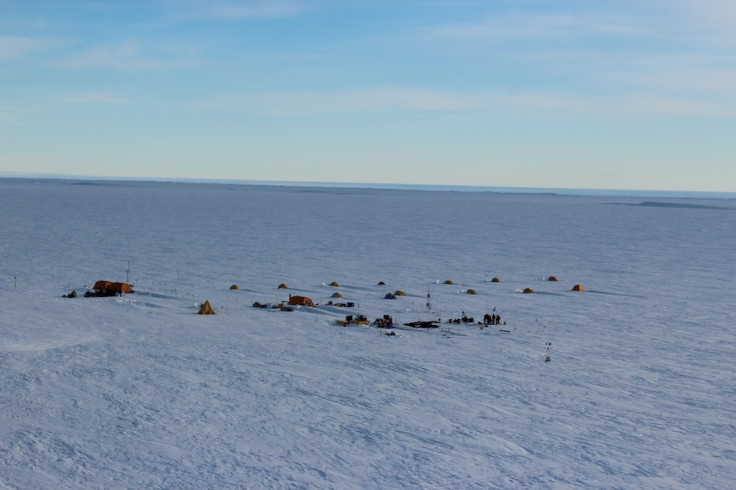'A terrible place' - the fastest-melting glacier in Antarctica started disappearing in the 1940s
The Pine Island Glacier began melting due to extreme El Niño activity, and is now responsible for 5% of global sea-level rise.
One of the largest and fastest retreating glaciers of the West Antarctic Ice Sheet started melting about 70 years ago, a new study has found.
The study is the first to measure the retreat of the glacier as part of a long-term trend triggered by strong ocean warming due to El Niño activity. The demise of the glacier, which drains into the Amundsen Sea, is contributing significantly to rising sea levels.
The Pine Island Glacier is about two-thirds the size of the UK. Scientists first became aware of its rapid retreat in the 1990s, with the advent of satellite monitoring of Antarctica, but they have now shown that the trend began in the 1940s, according to a paper published in Nature.
The researchers, led by the British Antarctic Survey, analysed sediment cores from underneath the floating part of the glacier. They found that a cavity underneath the shelf began to form before the mid-1940s. Warm sea-water flowed into the cavity under the shelf, allowing it to detach from the sea-floor ridge holding it in place.
Digging a 1km-deep hole
The sediment cores were retrieved by digging into a 450m hole through the ice and then searching down a further 500m under the sea.
"We collected sediment cores from beneath a floating ice shelf. This is where the glacier has flowed down towards the sea and is floating without breaking off," study co-author David Vaughan, director of science at the British Antarctic Survey, told IBTimes UK. "Below the floating ice shelf the sea bed has a record of things that have fallen out of the shelf as it's melted."

This record comes from radioisotopes of lead present in the sediment, which act as a record of how long they have been exposed to cosmic rays that the ice sheet would have stopped, as well as physical data on how compressed or loose the sediments were.
How much of the melting is related to anthropogenic climate change?
It's not clear why there was extreme El Niño activity in the 1940s, says Vaughan. He says that these events in particular cannot be directly linked to anthropogenic climate change.

But after this initiation, the continuation and acceleration of the melting ice sheet could have encouraged greater circulation of water underneath the ice shelf. "That could be related to anthropogenic climate change," he says.
"[The sediments] show us how changes halfway across the planet in the tropical Pacific reached through the ocean to influence the Antarctic ice sheet," says study co-author James Smith of the British Antarctic Survey.

'A terrible place'
Pine Island Glacier is one of the most inhospitable places on Earth and one of the most remote areas of Antarctica, more than 1,000km away from both UK and US research bases. "It's a terrible place, Pine Island Glacier," says Vaughan, who did not attend the expedition onto the ice but says he would have liked to.
The team of about 12 scientists were on the ice for a total of just a few weeks on the glacier. "On the ground it was real team effort to lower the drill by hand to the seabed on nearly 1,000m of rope," says Smith.

Worst may be yet to come
Vaughan is planning future work on the Pine Island Glacier's neighbouring Thwaite Glacier. He says that the same process at work at Pine Island might be at work here.
The next question to answer is whether glaciers of this shape are fundamentally stable or unstable. "The question is how long it will take the glaciers to restabilise after they've been given a kick. It's clear in this case that Pine Island Glacier responded in a fairly extreme way to that kick that it got in the 1940s."
Thwaite Glacier has a slightly different formation to the Pine Island Glacier that may make it more vulnerable to collapse, says Vaughan. "If it was initiated to a major retreat then it could collapse in a way that's irreversible and would only stop once the glacier is gone. But how long would it take, how much sea level rise would incur? Is there any opportunity to slow that down?"
The Pine Island Glacier accounted for about 5% of total global sea level rise between 2010 and 2013, Vaughan says, and Thwaite Glacier accounted for about the same amount. In total, the West Antarctic Ice Sheet accounted for about a third of global sea-level rise.

© Copyright IBTimes 2025. All rights reserved.






















